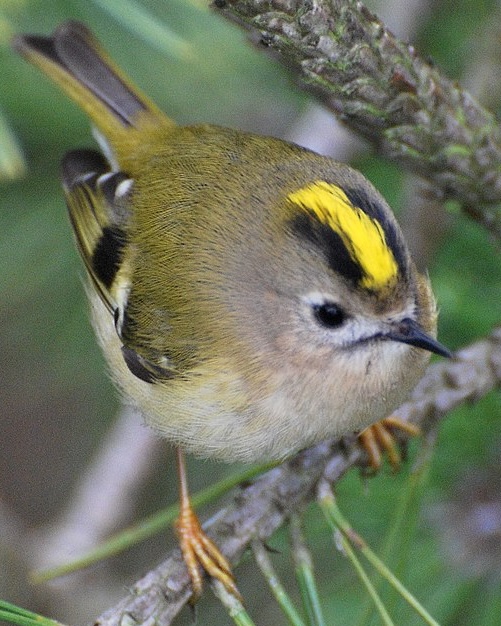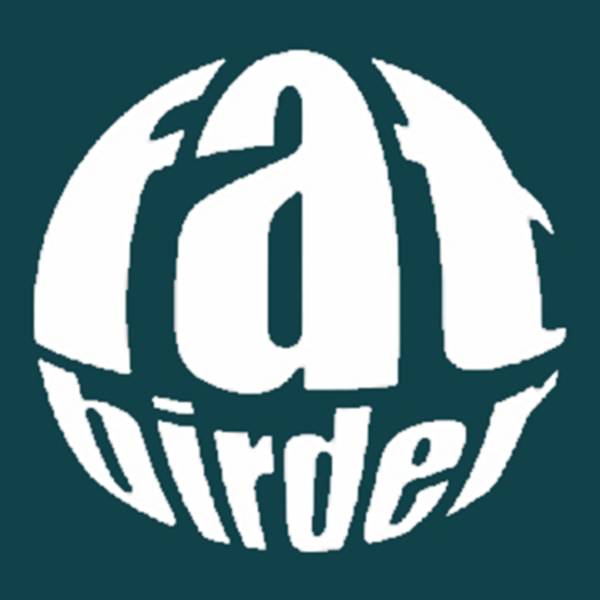Grand Duchy of Luxembourg

Luxembourg (officially the Grand Duchy of Luxembourg) is a landlocked country in Western Europe. It is bordered by Belgium to the west and north, Germany to the east, and France on the south. Its capital and most populous city, Luxembourg City, is one of the four institutional seats of the European Union and hosts several EU institutions, notably the Court of Justice of the European Union, the highest judicial authority in the EU. As part of the Low Countries, Luxembourg has close historic, political, and cultural ties to Belgium and the Netherlands. Luxembourg’s culture, people, and languages are greatly influenced by France and Germany: Luxembourgish, a Germanic language, is the only recognized national language of the Luxembourgish people and of the Grand Duchy of Luxembourg; French is the sole language for legislation; and both languages along with German are used for administrative matters. With an area of 2,586 km2 (998 square miles), Luxembourg is Europe’s seventh-smallest country. In 2024, it had a population of just over 670,000, which makes it one of the least-populated countries in Europe, albeit with the highest population growth rate; foreigners account for almost half the population. Luxembourg is a representative democracy headed by a constitutional monarch, Grand Duke Henri, making it the world’s only remaining sovereign grand duchy.
The northern third of the country is known as the Éislek or Oesling, and forms part of the Ardennes. It is dominated by hills and low mountains, including the Kneiff near Wilwerdange, which is the highest point, at 1,840 feet. Other mountains are the Buurgplaatz near Huldange and the Napoléonsgaard near Rambrouch. The region is sparsely populated, with only one town (Wiltz) with a population of more than five thousand people.

Forest at Gréngewald – ©GilPe CC BY-SA 4.0 via Wikimedia Commons
The southern two-thirds of the country is called the Guttland, and is more densely populated than the Éislek. It is also more diverse and can be divided into five geographic sub-regions. The Luxembourg plateau, in south-central Luxembourg, is a large, flat, sandstone formation, and the site of the city of Luxembourg. Little Switzerland, in the east of Luxembourg, has craggy terrain and thick forests. The Moselle valley is the lowest-lying region, running along the southeastern border. The Red Lands, in the far south and southwest, are Luxembourg’s industrial heartland and home to many of Luxembourg’s largest towns. The border between Luxembourg and Germany is formed by three rivers: the Moselle, the Sauer, and the Our. Other major rivers are the Alzette, the Attert, the Clerve, and the Wiltz. The valleys of the mid-Sauer and Attert form the border between the Gutland and the Éislek.
Luxembourg has an oceanic climate marked by high levels of precipitation, particularly in late summer. The summers are warm and winters cool.
Birding Luxembourg
Luxembourg has no moor land and very little standing water. There are four main land divisions: a small area of iron-ore deposits in the south, with a declining but still important iron and steel industry; a small area of lowland farmland in the rest of the south and the centre; a strip of very steep, heavily wooded valleys (part of the Eifel/Ardennes massif); and remnants of marshes and bogs in the north-west on an otherwise cultivated plateau.
Ornithological Importance – Eighteen Important Bird Areas (IBA) are included in the BirdLife International IBA-Programme. 300+ bird species have been reliably recorded in Luxembourg (including a number of escaped and introduced species). One of the most interesting zones is the Haff Réimech Nature Reserve (Remerschen Gravel pits) in the Moselle valley where more than 250 species have been recorded. The most interesting breeding species here are Little Bittern, Grey Woodpecker, Great Reed and Melodious Warbler. It’s the only breeding area in Luxembourg for Common Tern, Crested Grebe and Tufted Duck. Regular winter or migratory birds are Bittern (up to 6); Osprey, Bearded Tit, Hobby, Purple Heron and Great White Egret, ducks and waders. An 80ha Nature Reserve was declared here in 1997 and the whole area is a Natura2000 area and one of Luxembourg’s only two Ramsar sites. Since 2016 the visitor centre Biodiversum gives information on the area.

Haff Réimech Nature Reserve – ©MMFE CC BY-SA 3.0 via Wikimedia Commons
Perhaps the second major zone is the northwestern part of Luxembourg, the so-called Oesling, the land of Black Stork. 12 to 18 pairs of Black Stork breed in Luxembourg and this part of the country is probably the best for seeing them. Other interesting birds species are Eagle Owl and Great Grey and Red-backed Shrike. The numerous little wetlands owned by the Help for Nature Trust (Fondatioun Hëllef fir d’Natur) held populations of Yellow Wagtail and Whinchat. In Winter, Jacksnipe and Hen Harrier are likely to be seen here.
The Our is a little Stream on the German border. It’s good water quality makes it possible for the Otter to survive. Major bird species are Grey Wagtail, Dipper and Kingfisher. Black Stork, Red Kite, Hobby and Hazel Grouse breed in the forests alongside the Our.

German-Luxembourg Nature Park – ©Colling-architektur CC BY-SA 4.0 via Wikimedia Commons
The open iron-ore deposits in the southwestern part of Luxembourg are a unique place in central Europe. Breeding species include Woodlark, Tree Pipit, Eagle Owl, Stonechat and Black Woodpecker in the adjacent forests.
Habitats – Nearly 50% of the Luxembourg landscape is arable land. In the northern part of the country, the Oesling region (covering one third of the country); agriculture is partially dominated by grassland culture (26% of Oesling). Agriculture is part pastoral, part arable, with grazing, hay and silage meadows predominating (the main product being milk). Vines are grown for wine along the Moselle and some of its tributaries.
Forests cover a third of the land surface (almost entirely modified); and of this area one-third is coniferous and two-thirds deciduous. Luxembourg’s landscape is extremely poor in standing freshwater and moor lands; wetlands, once abundant, have been much reduced by modern agriculture, as have hedgerows. A small part of country, the so-called Minette, is dominated by abandoned open-cast (iron-ore) mines.
-
Number of bird species: 325
(As at April 2025)National Bird: Goldcrest Regulus regulus
-
Avibase
PDF ChecklistThis checklist includes all bird species found in Luxembourg , based on the best information available at this time. It is based on a wide variety of sources that I collated over many years. I am pleased to offer these checklists as a service to birdwatchers. If you find any error, please do not hesitate to report them. -
E-Bird
PDF ChecklistThis checklist is generated with data from eBird (ebird.org), a global database of bird sightings from birders like you. If you enjoy this checklist, please consider contributing your sightings to eBird. It is 100% free to take part, and your observations will help support birders, researchers, and conservationists worldwide. -
Wikipedia
Annotated ListThis is a list of the bird species recorded in Luxembourg. The avifauna of Luxembourg include a total of 324 species, of which 6 have been introduced by humans. This list follows natur&ëmwelt asbl. - BirdLife Int. Luxembourg (www.naturemwelt.lu).
-
Birds of Europe, North Africa, and the Middle East
| Photographic Guide | By Frédéric Jiguet & Aurélien Audevard | PUP | 2017 | Paperback | 447 pages, 2200 colour photos, colour distribution maps | ISBN: 9780691172439 Buy this book from NHBS.com -
Collins Bird Guide
| By Lars Svensson | Harper Collins | Edition 3 | 2023 | Paperback | 478 pages, 4000+ colour illustrations, 700 colour distribution maps | ISBN: 9780008547462 Buy this book from NHBS.com -
Tous les Oiseaux de France
| (de Belgique, de Suisse et du Luxembourg) | By Frédéric Jiguet & Aurélien Audevard | Delachaux et Niestle | 20209 | Paperback | 320 pages, 1500 colour photos | in French | ISBN: 9782603027691 Buy this book from NHBS.com -
Vögel Luxemburgs (Birds of Luxembourg)
| By Patric Lorgé | natur&ëmwelt | 2016 | Hardback | Edition 2 | 275 pages, colour photos, colour illustrations, colour tables | German with English, German, French and Luxembourgish nomenclature | ISBN: 9782919920013 Buy this book from NHBS.com

Collins Bird Guide
AndroidThe Collins Bird Guide App provides everything you need to identify a species quickly and learn about it thoroughly.
Collins Bird Guide
Apple iOS |Collins Bird Guide 4+ A field guide to Europe NatureGuides Ltd. Designed for iPadUseful Information-
BirdLife DataZone
WebpageBird Facts
Observatories-
Schlammwiss Bird Ringing Station
Observatory WebsiteSatellite ViewMany bird species have experienced population declines in recent years and are forced to deal with climate change effects, causing some species to adjust their migratory patterns. While numerous studies have addressed this issue, research from Luxembourg is currently still lacking. Therefore, this study investigated how the migratory numbers of three rare breeding bird species have changed over a time period of 10 years.
Museums & Universities-
Musée National d'Histoire Naturelle
WebsiteResearch project - Raptors and Owls from Luxembourg and Belgium: Exposure by mercury and organochlorines…
Organisations-
BirdLife Luxemburg - natur&ëmwelt
WebsiteKräizhaff, 5 Route de Luxembourg, Kockelscheuer, LU, LU-1899 Tel. +352 29 04 04-1; Fax +352 29 05 04 secretariat@naturemwelt.lu To protect wild birds and their habitats, natur&ëmwelt works closely with its foundation Hëllef fir d'Natur, (above) which is concerned with the purchase and management of habitats.
Reserves-
IBAs - Luxembourg
InformationSatellite View -
NP Upper Sûre Natural Park WII
InformationSatellite ViewIt is a national park in north-western Luxembourg. Located in the Oesling region, the park is primarily an area of conservation and a specially protected area for wild birds. -
NR German-Luxembourg Nature Park
InformationSatellite ViewThe German-Luxembourg Nature Park is a cross-border nature park, which was established on 17 April 1964 by state treaty between the German state of Rhineland-Palatinate and the Grand Duchy of Luxembourg. It thus became the first cross-border nature park in Western Europe. -
NR Haff Réimech Nature Reserve
WebpageSatellite ViewHaff Réimech wetland is an 300 ha old gravel pit area with lakes surrounded by reed in the Moselle valley just north of Schengen. -
Schlammwiss
WebsiteSatellite ViewInformation about the nature reserve and its biodiversity... -
Wetlands
WebsiteSatellite ViewThe convention entered into force in Luxembourg on 15 August 1998. Luxembourg currently has 2 sites designated as Wetlands of International Importance (Ramsar Sites), with a surface area of 17,213 hectares.
Sightings, News & Forums-
eBird
SightingseBirding This Year
Trip Reports-
2013 [01 January] - Bruce Wedderburn - Belgium, Holland, Germany and Luxembourg
ReportI had to travel to France for business and as I had worked through Christmas and New Year, I decided to spend 10 days exploring parts of France that I had not visited previously, together with Yvonne. When we were in France, we decided to extend the visit by another 10 days and also visit Belgium, Holland, Germany and Luxembourg.
Other Links-
All Trails
InformationBest bird watching trails in Luxembourg -
Birding Places
InformationHaff Réimech Nature Reserve wetland is an 300 ha old gravel pit area with lakes surrounded by reed in the Moselle valley just north of Schengen.
Fatbirder - linking birders worldwide...
Skip to content
